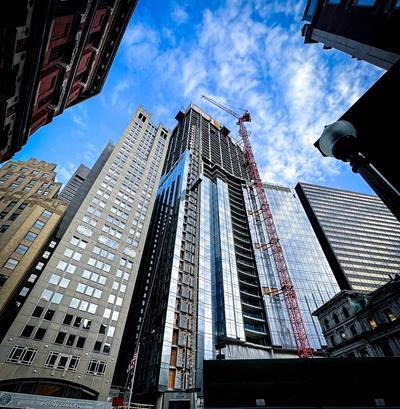Originally published by Banker & Tradesman
The long-term effects of the pandemic are taking shape in the Greater Boston office market, largely defined by the sluggish return-to-office (RTO) that continues to challenge the role of the workplace.
As recently as late 2021, many in commercial real estate anticipated that workplaces would be bustling with near pre-pandemic attendance levels by now, but a series of COVID variants paired with employees’ desire for flexibility have slowed many companies’ plans.
Looking ahead into the near- and mid-term, hybrid models will continue to impact occupancies: A Massachusetts Business Roundtable survey found that 68 percent of large companies are planning to employ a hybrid work model indefinitely.
In addition to RTO planning and rollouts, employers are eyeing uncertain economic forecasts as they make real estate decisions for 2023 and beyond. The third quarter of 2022 saw a 33 percent drop in venture funding from the previous quarter, and inflation remains a top concern for individuals and businesses alike. The tech industry, often considered a bellwether for the greater business world, has seen significant layoffs at high-profile organizations, with more expected to follow. As companies brace for a potential ripple effect across the economy, real estate expenses are under heightened scrutiny and decision makers are looking for value.
2023 Office Market Outlook
While each economic downturn is unique in nature and impact, we anticipate some distinct shifts in Boston’s office market in 2023. As has been widely reported, sublease availabilities abound and will continue to hit the market as organizations reassess long-term needs. At the close of the third quarter of this year, 3.1 million square feet of sublease space was available in downtown Boston, surpassing a high of 3 million square feet set in the fourth quarter of 2020. We expect to see even more sublease space on the market in the coming months in addition to scheduled deliveries of new office construction.
As a result of this influx of inventory, office rents will likely begin to drop, starting with the class B market. We expect lower tower floors and spaces in aging office buildings to see limited demand as more desirable options flood the market. High-end, class A space is poised to remain competitive in the near term, as many organizations have indicated that quality and amenities are key factors in drawing employees back to the workplace.
Overall, we expect hybrid work to present a structural challenge to the office market for years to come. With economic and market uncertainty, organizations will likely be hesitant to commit to longer leases. We expect shorter leases of two to four years to remain common as companies go through iterations and implementation of their RTO policies.
The Tenant Perspective
Despite the economic outlook, it’s a great time to be an office occupier looking for space. With so many options available, occupiers will have negotiating power with landlords who are increasingly eager to secure a tenant.
Tenants looking for quality can weigh their options among fully built-out sublease space and customizable new construction. Built-out sublease space may present significant cost savings when considering the enduring high construction costs for tenant improvement packages in newly built offices. For those who are willing to compromise on quality, there is great opportunity for favorable terms in commodity space.
As the winds shift in tenants’ favor, it is critical to understand your advantages and how to use them. We expect occupiers to hold significant leverage by mid-year 2023, and those in search of space should be prepared to act decisively when opportunities arise. Thorough due diligence including workplace strategy, utilization projections, and labor analytics will uncover essential space implications.
With business needs and priorities defined, occupiers should be willing to approach lease terms creatively to secure the best deal. Adjusting the levers that are available – lease length, flexibility, furniture and improvement dollars – can generate significant value in a nuanced and evolving office market.
Adam Subber is managing principal at Cresa.
More than half the office space is leased in the Winthrop Center skyscraper on Federal Street ahead of its completion in 2023. Photo courtesy of MP Boston.
